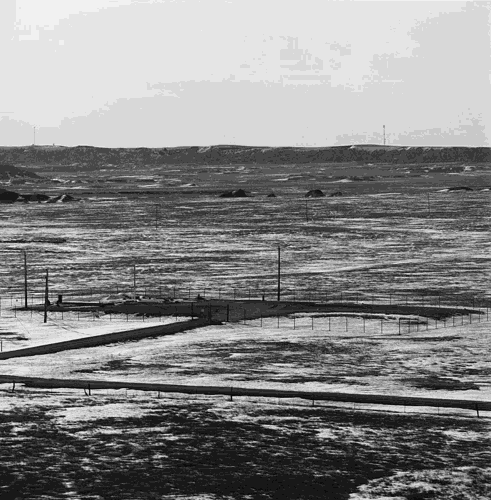As the Russian invasion of Ukraine continues, the possibility of nuclear war has weighed on the minds of many. Should a nuclear war take place, it may put Colorado and neighboring states in the crosshairs by design. This would be due to a "nuclear sponge" strategy first used during the Cold War, with 'sponge' locations designed to absorb an initial wave of nuclear attack.
In short, this "nuclear sponge" strategy sought to spread the United States' nuclear arsenal across remote, unpopulated regions. This way, an attacking country looking to prevent a counterattack would be forced to focus first on these places over key population centers. Because of this strategy, many nuclear missiles are stored across the interior west, including in Colorado, making this part of the country a sort of 'intentional target.'
In a recent interview with 9News, foreign affairs expert Dr. Fiona Hill said that while the 'nuclear sponge' tactic made Colorado a first target of nuclear attack during the Cold War, that may not be the case today. For Hill, it boils down to the differing motives behind the two international incidents, with Hill calling Putin's invasion of Ukraine a sign of weakness, the result of Putin's desire for attention and a desire to show his ability to effectively use nuclear blackmail techniques. Hill didn't directly address whether or not she thought Colorado would still be a top target today.
The missile silos spread across the Great Plains are no secret, with American writer Ian Frazier once calling them "one of the quintessential Great Plains objects: to the eye, it is almost nothing, just one or two acres of ground with a concrete slab in the middle and some posts and poles sticking up behind an eight-foot-high cyclone fence: but to the imagination, it is the end of the world."

Aerial view of the Delta-09 launch facility in South Dakota. This image shows how discrete these sites can be. Image: NPS HAER.
According to an article published by the National Parks Service, there are three reasons the missile silos were installed in the interior west – distance, protection, and proximity to cities.
In terms of distance, the missile silos in the Great Plains are close to Russia. The Delta-09 launch facility (pictured above) in South Dakota, for example, is just 5,100 miles from Moscow. In terms of protection, the distance from American coasts means protection from sea-based attacks and from invasion. In terms of proximity to major cities, installing a potential target in the Great Plains meant fewer lives were at risk opposed to installing a missile delivery system close to somewhere like New York.
The first Intercontinental Ballistic Missile silos were installed in the Great Plains region in 1959 in the form of the Atlas sites in Wyoming. Hundreds of additional Atlas, Titan, Minuteman, and Peacekeeper sites have been installed since. The most common site is the Minuteman site, which is built for a missile that utilizes solid fuel technology that allows for mass production, also with remote launch capabilities.
The map below shows where active Minuteman Missile Fields are located in red and where deactivated missile fields are located in black. Note that other nuclear sites and potential targets may also exist.

Red zones show active Minuteman Missile fields and black zones show Minuteman Missile fields that have since been deactivated since the Cold War. Note: This map is not dated, but is published on the National Parks Service website. Map Credit: NPS.
It's also worth noting that Colorado is home to a number of nuclear sites that are now abandoned, several of which were in the Denver area.
Worry has also been expressed that Colorado may be a target for nuclear attack based on criteria other than the "nuclear sponge."
Colorado is home to a number of important military bases, defense contractors, and Denver International Airport as a major transportation hub. Colorado Springs was also listed as one of four targets during a hypothetical nuclear attack published in a North Korean propaganda video, with that map going viral for how it misplaced Colorado Springs on the map of the country, putting it somewhere near Arkansas and Louisiana.
There's no way around it – the possibility of nuclear war is terrifying. While Colorado may have been a target in the past, it's impossible to predict what could happen in the modern era. In a world where an estimated 13,000 nuclear warheads exist, it's hard to imagine that any sort of 'nuclear sponge' strategy would have much of a lasting impact.
STAY INFORMED: Sign-up for the daily OutThere Colorado newsletter here











(1) comment
NATO has been surrounding russia/USSR since its creation but
"Russian invasion of Ukraine continues" Ya think??
When the US stops funneling money to the Ukrainian, neo-not-see regime: Russia will stop..
Welcome to the discussion.
Log In
Keep it Clean. Please avoid obscene, vulgar, lewd, racist or sexually-oriented language.
PLEASE TURN OFF YOUR CAPS LOCK.
Don't Threaten. Threats of harming another person will not be tolerated.
Be Truthful. Don't knowingly lie about anyone or anything.
Be Nice. No racism, sexism or any sort of -ism that is degrading to another person.
Be Proactive. Use the 'Report' link on each comment to let us know of abusive posts.
Share with Us. We'd love to hear eyewitness accounts, the history behind an article.